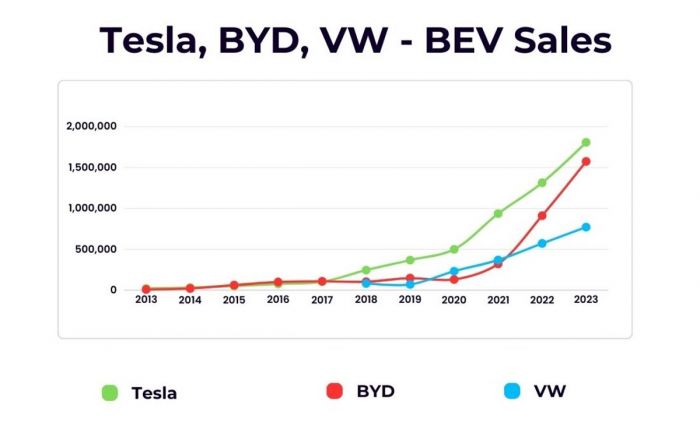Being one of the pioneers in the automotive industry, you can hardly go wrong with its engines when it comes to quality. It's from this maker where the famed 3.5-liter EcoBoost V6, 5.0-liter Coyote, and the 6.7-liter Power Stroke originated.
This does not mean that it is perfect though. Amid its colorful history, the automaker has also produced some bad eggs that have gained their fair share of infamy. Among the ones taking a lot of heat as of late is the Ford 3.0L EcoBoost, and that's exactly what we will try to find out here.

Key features and my opinion about the engine
- Production years:2017-now
- Average lifespan of 3.0L V6 EcoBoost:200,000-240,000 miles
- Fuel supply type:direct injection
- Power range:350-550 hp
- Fuel efficiency:average
- Engine block material:aluminum
- Engine reliability score:medium
- The most common problems:valvetrain problems, issues with electronics, oil consumption, power loss.
Longevity
Ford engines are generally known to last past 200,000 miles before requiring a rebuild or replacement. However, with the various problems tied up with the Ford 3.0L EcoBoost that tend to manifest just after taking the vehicle equipped with it out of the dealership, we think you'd be lucky to stretch its life to 100,000 miles without a major hiccup.
With that, we strongly advise treading carefully with this engine. If you happen to be a buyer considering this product, we recommend checking out other Ford autos that neither have the 3.0L nor the 2.7L until they are perfectly cleared of all the allegations made by a bunch of disgruntled users.
Common Problems Identified with the Ford 3.0L EcoBoost Engine
In the middle of 2022, reports surfaced about several lawsuits filed by Ford 2.7L and 3.0L engine users. They claimed that their vehicles were prone to power loss during high speeds and restarting issues. Some veteran technicians also chimed in their thoughts about the matter and agreed with the allegations of the complainants.
To date, the lawsuits are still pending resolution, however, some of the factors listed in this section have the potential to be a key contributor to the problems mentioned. Based on Ford owners as well as mechanics familiar with the engine, here are the most common problems identified with the 3.0L EcoBoost engine:
1. Carbon Build-Up in the Engine
Carbon build-up is particularly common with the Ford 3.0L EcoBoost. While carbon build-up is fairly common in every vehicle, especially those that are frequently subjected to harsh driving conditions or recreational activities, those who are knowledgeable in the inner workings of the 2.7L and 3.5L versions of the EcoBoost think that the 3.0L variant has a higher tendency to develop such a problem because it didn't adapt the same hybrid injection system featuring a combination of both direct and port configuration present in the other two.
Nevertheless, it is important to make sure that your engine is free from a serious amount of carbon build-up that could result in various performance issues. The accumulation of dirt in huge amounts could eventually lead to clogging in the system that could hinder the proper operation of the power unit triggering stalling, rough starts, or even overheating.
If you notice symptoms such as engine misfires, rough idle, performance reduction, poor emission, bogging, and spiking engine temperatures, it's about time for you to take action. Among the common culprits here include a dirty air filter, incorrect fuel mixture, inefficient burning of fuel, frequent short trips that do not allow the engine to reach operating temperature, leaking intake manifold gasket, and exhaust gas recirculation (EGR) system malfunction.
The simplest and most common way to clean carbon deposits is through the use of a top-quality engine cleaner. This is a product that you pour into your gas tank that helps clean the entire fuel system as you drive.
Another way to clean carbon is by using a decarbonization kit. These kits are usually more expensive than top engine cleaners, but they offer a deeper and more comprehensive clean-up since they also target carbon deposits found in the intake valves and combustion chamber.
Walnut blasting is one more method that can be used to clean carbon build-up. This involves using a high-pressure air stream to blast walnut shells into the intake valves and combustion chamber. This method is generally used as a last resort, as it can cause damage to the engine if not done properly.
In some cases, the carbon build-up can be so severe that parts need to be replaced. The most common parts that need to be replaced are the intake valves, manifold gasket, EGR system, and piston rings. In extreme cases, the entire engine may need to be rebuilt. When any of these happens, it is best to consult a professional mechanic to properly diagnose and fix the problem.
As a standard, experts recommend including the cleaning of carbon deposits in the internal parts of your vehicle every 100,000 miles to prevent any issues associated with them.
2. Nano Oil Pan Leaks
A lot of 3.0L EcoBoost engine users have complained about leaks in the system of their cars. Most of the time, the problems originate in the nano oil pan of their Fords, and even brand-new units that were just taken out of the dealerships are allegedly prone to this. The good thing about this scenario is that they tend to happen during the warranty period of their autos, which makes the repairs free for them.
The symptoms of a nano oil pan leak in the Ford 3.0L EcoBoost engine are usually easy to spot. The first sign would be a constant drop in the level of the oil in your car's engine. This can be seen by checking the dipstick, and if you notice that the oil tends to be lower than usual even if you just refilled its reservoir, it might be because of a leak.
Another common symptom would be smoke or steam coming from the engine. If you see this, it means that there is hot oil escaping from the leak, and it could lead to further damage if not fixed right away.
Lastly, you might also hear a weird noise coming from the engine when it's running. This could be due to the escaping oil hitting other parts of the engine, and it's definitely something that you want to take care of as soon as possible.
The cause of these leaks is still unknown, but there are some possible explanations. It might be due to the fact that the oil pan is made of aluminum, and thus it expands and contracts more than the other parts of the engine made from different materials. The problem might also lie in the design of the oil pan itself.
There are ways to fix this problem, depending on its severity. For a start, you can try tightening the bolts around the oil pan to see if that would stop the leak. If that doesn't work, then you can replace the sealant around the gasket or even replace the gasket itself. In extreme cases, you might have to replace the entire oil pan.
As for parts replacement, the most common one would be the oil pan gasket. It is advisable to get a new one from the dealership where you got your car, to make sure that it would fit perfectly. You can also ask for a replacement oil pan from them if yours is already beyond repair.
Nano oil pan leaks in the Ford 3.0L EcoBoost engine can be quite bothersome, but thankfully, there are ways to fix them. Just follow the tips above, and you should be able to get your car back on the road in no time. On the other hand, if your vehicle is still covered by warranty, it would be wise to bring your auto to your Ford dealership so they can do all the work for free.
3. Ignition System Issue
If your Ford 3.0L EcoBoost engine is experiencing ignition system issues, there are several possible causes and solutions. The most common cause of ignition system problems is a faulty spark plug. A spark plug that is not firing correctly can cause the engine to misfire and run rough. If you suspect a problem with your spark plugs, have them checked by a professional mechanic.
Another likely source of ignition system problems is a dirty or damaged Mass Air Flow (MAF) sensor. The MAF sensor measures the amount of airflow into the engine and helps the computer determine the correct air/fuel mixture. If the MAF sensor is dirty or damaged, it can cause the engine to run lean (too much air in the mixture) or rich (too much fuel in the mixture). Lean and rich conditions can both cause ignition system problems.
The solution to most ignition system problems is to have the spark plugs and MAF sensor checked and cleaned or replaced as necessary. However, if the problem is severe, such as a cracked spark plug, damaged coil pack, or burned-out igniter, the entire ignition system may need to be replaced. The latter consists of a more involved repair that should certainly be done by a professional mechanic.
Ford 3.0L EcoBoost Engine Specs
The Ford 3.0 EcoBoost is a duel-overhead cam (DOHC) engine with a V6 design and partnered with a twin-turbo system. It is made of aluminum head and block plus it has a 24-valve layout and variable camshaft timing (VCT) technology.
The unit possesses a bore of 85 mm and a stroke of 86 mm. Its architecture allows a compression ratio of 9.5:1. When it comes to power, the engine is capable of delivering 350 to 494 hp and 380 to 630 lb-ft of torque in its various applications, including the electrified models that have it.
Is the Ford 3.0L EcoBoost Engine the Right One For You?
On paper, the Ford 3.0L EcoBoost Engine really has promising features. However, it is forever marred by controversies stemming from numerous complaints about it, and the lawsuits are not helping save its status either.
While we do have a lot of reservations about this product, it's ultimately up to you whether you should go for a vehicle equipped with the engine or not. Should you decide to proceed with its ownership, just be sure to keep your vehicle under regular maintenance to at least mitigate or even eliminate your chances of ever encountering the problems shown here.
About the authors
The CarAraC research team is composed of seasoned auto mechanics and automotive industry professionals, including individuals with advanced degrees and certifications in their field. Our team members boast prestigious credentials, reflecting their extensive knowledge and skills. These qualifications include: IMI: Institute of the Motor Industry, ASE-Certified Master Automobile Technicians; Coventry University, Graduate of MA in Automotive Journalism; Politecnico di Torino, Italy, MS Automotive Engineering; Ss. Cyril and Methodius University in Skopje, Mechanical University in Skopje; TOC Automotive College; DHA Suffa University, Department of Mechanical Engineering






Add comment